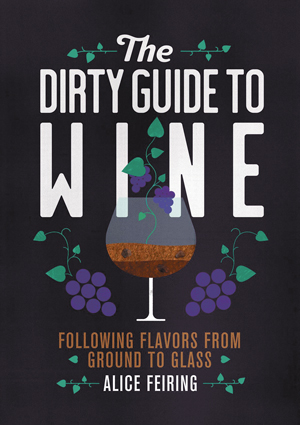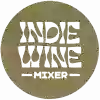Romancing the Stones
Feiring and Lepeltier’s “The Dirty Guide to Wine”
There’s no escaping soil. We play in it, we grow food in it and, ultimately, many of us are buried in it. Yet scientists believe we know more about the stars and planets than the ground beneath our feet. In their new book, “The Dirty Guide to Wine: Following Flavors from Ground to Glass,” Alice Feiring and Pascaline Lepeltier aim to break down that mysterious soil in hopes of changing wine buyers’ focus from grape variety to place. The authors also ask, “Does vineyard geology go directly into the glass? They may succeed with their place vs. grape mission, but their approach to the geology question is complicated and, at times, confusing.

Feiring’s inspiration for this book comes from a restaurant that organizes its wine list by the bedrock in which the vines are planted. This piqued her interest and how wines are marketed to the consumer. “Consideration of the type of bedrock and topsoil a vine grows in has become almost mocked in the mainstream wine world,” Feiring writes, “yet it is essential to the way the wine tastes and ages. The type of soil a vine grows in has a profound effect on the resulting wine’s taste.” Scientists are on the hook as well as Feiring writes at great length in the introduction about how many of them are challenging soil’s direct impact on wine.
Buy wine by grape variety alone, and Feiring predicts you may miss out on “a lot of wines that don’t fall in the little box you’ve chosen for yourself.” As an example, she uses the La Garagista wines made by Deirdre Heekin in Vermont, using grapes like Marquette and Brianna. Heekin’s wines aren’t widely distributed in the U.S., so consideration of the Green Mountain State’s soil types probably won’t attract new buyers. People are more likely to find wines like these by walking into their favorite bottle shop and inquiring about unorthodox grape varieties. What Feiring is really suggesting the reader do is step back from “fighting varietals,” like Merlot and Chardonnay, to explore little-known grapes, from obscure producers, in little-known regions — which is fantastic, and I applaud any effort to broaden the horizons of wine drinkers.
The book’s exploration yields plenty of useful information for everyone, from novices to wine professionals. First, it’s an excellent geology primer covering the basics of igneous, sedimentary and metamorphic soils. Wine students will find its numerous charts, like the one listing the soil compositions of Alsatian vineyards, particularly useful. Novices will enjoy the section on “How to taste wine,” while a more advanced oenophile might revel in the section devoted to buying Burgundy without having to apply for a reverse mortgage.
People on all rungs of the wine ladder will appreciate being skillfully guided through lesser-known regions such as the Canary Islands and Alto Piemonte, all the while tempted by grapes like Pelaverga and Espadeiro. It’s also worth the price of the book just to discover winemakers like Lorenzo Accomasso in Barolo and Hirotake Ooka in St. Péray.
The authors use bedrock and soil to give wine drinkers a new perspective, something Lepeltier describes as “an invitation to connect places and bottles.” Feiring feels providing information about vineyard geology will add to the intimacy and enjoyment of one’s drinking experience.
The book excels in Lepeltier and Feiring writing passionately and evocatively about their favorite wines and soils. For example, likening the aroma of a Pouilly-Fumé from Jonathan Pabiot to “the smell of a knife being drawn from a warrior’s side” runs the risk of exciting the reader to the point of putting down the book and rushing to the store. But are the authors suggesting the wine’s flinty aroma is connected to the rocks in Pabiot’s vineyard? This is where their case for soil gets muddy.
Lepeltier writes “One cannot taste the small oyster shells, Exogyra virgula, in a Chablis or taste basalt in wines from Mount Etna. ...This is not a book to give proof that you can taste rocks in your wine.” Then, Feiring adds, “It just ain’t possible.” But how do these statements jibe with the subtitle of the book?
The authors claim how even if scientists state it’s impossible, that doesn’t mean there’s no connection. The book is actually rife with claims that connect wine flavor to soil, often couched in phrases like “some people believe” and “some writers I’ve read say.” The claims are also direct, such as Feiring tasting flavors “of the earth and never the grape itself” or a wine from a clay-based vineyard she describes as having “a deep cherry you know does not come from the vine.” The authors can’t prove these claims beyond the use of anecdotal evidence, but they insist they don’t want to either. Feiring concludes, “While some people need scientific proof, others go with their gut.”
Far many factors, besides soil, matter regarding how wines taste, including climate, farming practices, type of rootstock, winemaking techniques, wild yeasts, microorganisms in the soil and, according to some new research, possibly even the bacteria in our mouths. The authors acknowledge a few at various points in the book, yet continue to push for the primacy of soil by using phrases like “profound effect” and arguing “it is the soil that gives the vine a fighting chance.” So does water, but that can be another book.
Perhaps, a better way to examine this issue is wine as a happy marriage of all these factors, but I know that’s not as sexy as images of chalk-filled vineyards in Champagne. I believe the authors know this to be true because buried in a closing chapter on Alsace there is the following passage: “After all, as Pascaline says, 96 percent of a grape’s success is having the right kind of sunlight and rain, the other 4 percent is the soil and what the farmer does with it.”
Scientists claim vines can’t suck up traces of limestone, basalt, etc. like a straw and deposit any kind of unique flavor into wine. Others just know it to be true. If you approach this book looking for answers to this debate, you will feel frustrated. Feiring’s advice to “taste the wines and come to your own conclusions” is all I can offer you.
In addition, if you don’t enjoy natural wines, be aware the authors focus their attention on the wines they love and those happen to be made with organic fruit, native yeasts and at most, a little sulfur added before bottling. But if you are interested in learning more about where the wines you drink come from or are on the hunt for new discoveries, you will be endlessly entertained by the authors’ passion and poetry. For that alone, I recommend digging into the “Dirt.”
Michael Alberty is a writer based in the vibrant community of Tualatin. He has published in areas as diverse as international environmental politics, wine, coffee and major league baseball. He long ago abandoned academia to enjoy lengthy careers in natural foods, espresso and wine retail. Maintaining the abandonment theme, he recently closed his wine store to pursue full-time wine writing.












